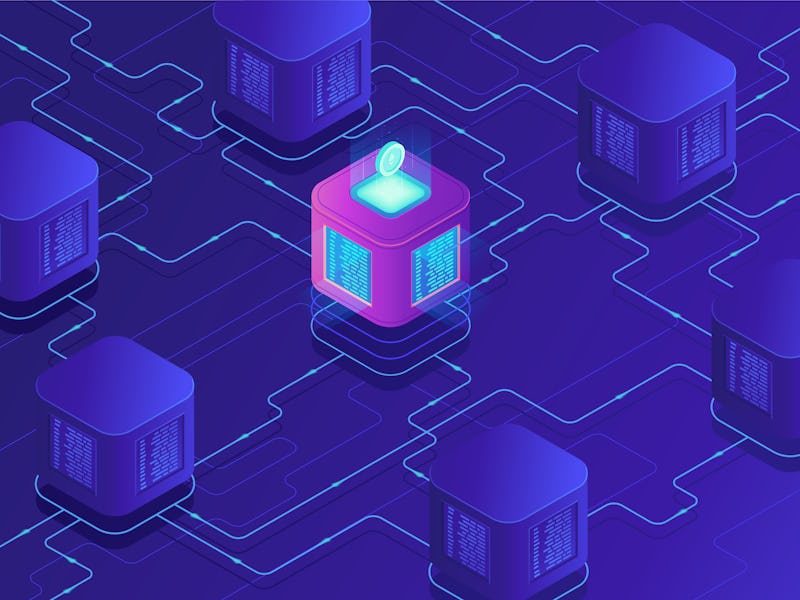This cryptocurrency tech could break down Covid-19 research barriers
Using a blockchain to securely share Covid-19 data could greatly speed-up research, authors argue.

"Blockchain" is an enigma of a security structure beloved by cryptocurrency miners around the world. Digital "blocks" stored in a virtual "chain," the technology has proved difficult for the public at large to ascertain and has remained on the fringes of mainstream. But that could all change with a new report in Science that says it could be the solution to speeding up Covid-19 research.
Scientists from across the world are working day and night to discover how to best fight Covid-19 through tests for infections and anti-bodies as well as vaccine development. But communicating that life-saving information across disciplines -- let alone countries -- can be a frustratingly slow process and can in some cases lead to the dissemination of ill-vetted information published without peer-review.
Blockchains would be a secure way to communicate information, but they can do more. They could dissolve human barriers in the way of spreading information. With knowledge of coronavirus a matter of national security, it could keep away prying eyes trying to use valuable research.
In a new report published Thursday in the journal Science, a group of researchers from California and the Netherlands writes that there are three main barriers preventing scientists from effectively communicating important research: procedural delays, ownership right debates, and secrecy over new discoveries.
"[T]here are persistent barriers to sharing and cooperative research and development (R&D) in the context of epidemics, rooted in a lack of trust in confidentiality and reciprocity, ambiguity over resource ownership, and conflicting public, private, and academic incentives," write the authors.
Essentially, scientific publishing has created a tug-of-war between the internal interests of scientists and their institutions and the fair dissemination of information and procedures. For example, it might be in the best interest of some institutions to withhold results while waiting for a patent to be filed on a new technology. On the other side of the coin, some countries may withhold data for fear that international solutions would be outside their means to implement, which the authors write was the case in 2006 when the Indonesian government refused to share its H5N1 flu samples for fear of "the unaffordability of resulting vaccines."
While the goal of scientific research is to bring knowledge to those who most need it, these human-created barriers often stand in the way, write the authors.
This simplified version of the proposed blockchain demonstrates how information provided from a data provider can be distributed to a data user without risk of the information being misrepresented.
As a solution, the report's first author, Mark van der Waal tells Inverse that using blockchain to facilitate the dissemination of research could speed up the process by making researchers, institutions, and countries more willing to participate.
"[B]lockchain should not be seen as opposed to, but as [a] complement to other forms of cooperation," says van der Waal. "[B]lockchain technology could underpin status-quo systems as a shared root layer for identity, traceability, reciprocity, and legal certainty, offering a record keeping system that is inviolable and verifiable by all permitted systems and users in the network."
Not a silver bullet, but a big upgrade.
Instead of putting one institution or publication in charge of spreading information, a decentralized blockchain would provide equal power to all those contributing information. Information is stored on individual servers (referred to as nodes) and each node contains the same distributed ledger that represents all time-stamped information in the chain. Any alteration made to the ledger of one node would put it out of sync with the other nodes and change the unique output of the blockchain, therefore making it impossible (or at least very, very challenging) to secretly alter information.
This kind of technology has been used for everything from cryptocurrency to tax compliance and researchers say it could provide a safe environment for scientists to share data without fear of it be stolen or misrepresented.
Blockchains are typically seen in the realm of cryptocurrency, which limits their use. Expanding into research could breath new life into the technology.
The authors write that data in a research setting could be shared and time-stamped to the blockchain while still requiring permission to view the full dataset. This would ensure that researchers could still stake their claim on discovering information (by time-stamping it in the immutable chain) while also sharing the data. Such a system could begin to break down some of the barriers slowing down this spread of information and improve the speed at which this research is done.
That said, using a blockchain would be far from a silver bullet, write the authors.
"[B]lockchain is not a panacea," the authors write. "Efforts to address market failures and regional capacity building to improve R&D are essential for long-term preparedness."
Additionally, while van der Waal says it's probably too late to intact such a system for Covid-19, lessons learned during this pandemic can help inform how such a system might be implemented in the future.
"[R]ealistically speaking, an ORBI [outbreak R&D blockchain infrastructure] as presented could not have been applied to COVID-19," says van der Waal. "That being said, a system like this could benefit future pandemic response in several ways... For instance, they could assist in breaking down data silos, as currently witnessed for SARS-CoV-2 genetic sequence data, and coordinate fair and equitable access and benefit-sharing (ABS) among public, private, and academic actors."
This article has been updated to reflect a correction to the description of blockchain nodes and clarify its use in future pandemics.